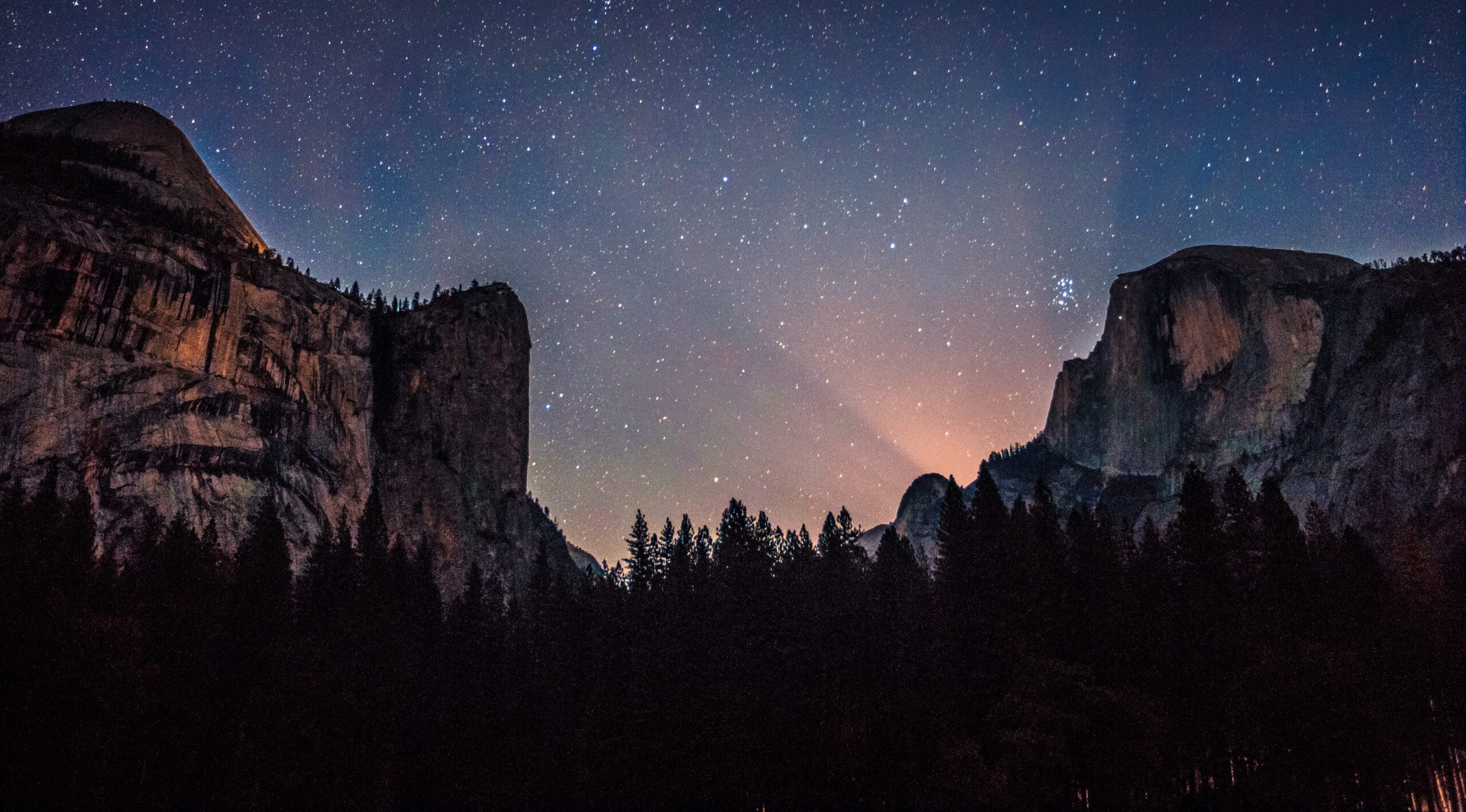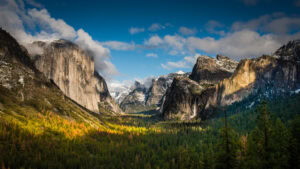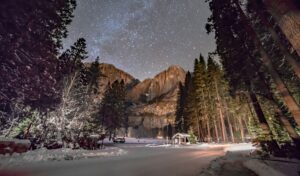The night sky of Mariposa County is like a surprise visit from an old friend. It signals a time for reflection, for observation. There’s something about looking up at the stars that inspires dreams, and a shared purpose. President Teddy Roosevelt, champion of our National Parks System, had a mantra: “Keep your eyes on the stars, and your feet on the ground.” No doubt when he famously camped with John Muir at Glacier Point they followed that advice. And what they saw in 1903 — the expanse of blackness sparkling with countless stars, the gauzy swath of the Milky Way — is exactly what can be seen today.
Any cloudless night is the right night for stargazing in Mariposa County. It doesn’t matter what time of year, or what’s going on in the news, the clear mountain air is a reliable lens through which to relax and explore the universe. And for those who live in light-polluted cities, experiencing this vast and insanely luminous night sky is as simple as driving a few hours. Who knew such a wow moment could be found so close by? In addition to hopping in the car for a spontaneous star trip, there are forecasted celestial events worthy of marking on the calendar. Here’s the spectrum of what you might see, from shooting stars to distant galaxies…
Meteoric Blaze

Technically speaking, shooting stars are not stars at all rather fragments of asteroids and comet dust called meteoroids. These particles burn up as they approach the Earth creating a blaze of light overhead. Due to dark skies and good visibility, Mariposa County boasts ideal conditions for spotting these objects with only one prerequisite — look up!
There are certain times of year when large numbers of meteoroids radiate from a certain constellation in the sky. These are called meteor showers and viewing them can be an unforgettable experience. The most popular is the Perseid Meteor Shower. Occurring from mid-July to late August, the Perseids are found near the prominent constellation Perseus and feature anywhere from fifty to ninety meteors per hour. Peak viewing occurs from August 9 to August 14, perfect for warm summer escapes.
Found near the constellation of Gemini, the Geminid Showers require a bit more pluck. Occurring every year from December 4 to December 17, the Geminids are accompanied by cool weather and occasional Sierra snow but make up for it with over a hundred bright, intensely colored meteors per hour. Beginning around sunset, the show goes on all night with peak performance around 2 a.m. on December 13-14. A soft blanket and thermos of your favorite hot beverage round out the festivities.
Any time of year with a clear and dark right sky, you might spy a shooting star that doesn’t trail off, but continues at breakneck speed across the sky. An airplane? No, too high and way too fast. They’re actually satellites in orbit, visible to the naked eye through the crystalline mountain air.
Constellation Connection
With an unobstructed night sky, Mariposa County is nature’s planetarium. Representing ancient gods, goddesses, animals and mythological beasts, there are 88 constellations (groups of stars that form a distinct shape) in our northern and southern skies. Names such as Orion, Draco and Ursa Major all have their own histories & meanings, and these constellations change with the seasons providing a rotating cast of characters and countless hours of fun trying to identify them.
Whether you’re walking through Yosemite Valley with a killer astronomy app or huddled around a homemade star wheel atop a chunk of granite far from the city lights, Mariposa County satisfies the curiosity of astronomers from novice to virtuoso.
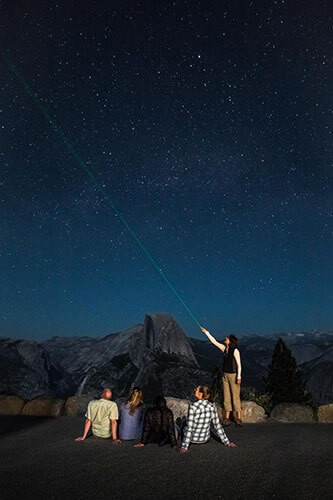
Galaxies, Near And Far
Just about everyone knows we live in the spiral disc called the Milky Way, but few have actually seen it. In Mariposa County, where night sky conditions are ideal, our galaxy is on full display. This majestic river of light is best viewed in summer months but visible from February through October depending on the time of night and light conditions. What we’re seeing is actually the edge of where we live, from the inside looking out. Something to ponder deeply about as we gaze skyward!
For those stargazers who want to swing for the fences, the Andromeda Galaxy awaits. Also known as M31, Andromeda is the most distant galaxy we can see with the unaided eye and appears as a fuzzy thumbprint of light about the size of the full moon. At a distance of 2.5 million light years, Andromeda can be found in the night sky year-round and is most easily located by using the constellation Cassiopeia.
Full Moon Club
With the wide variety of geography in Mariposa County, the full moon unleashes a dance unlike any other. Whether sparkling off the still, dark water of Tenaya Lake, peeking through the sturdy branches of a Giant Sequoia, or rising commandingly over Half Dome, the full moon summons visitors year-round with names such as Wolf (January), Strawberry (June) and Harvest (October). The native Southern Miwok word for moon is kome, and when full its luminescence enabled nighttime travel, fishing and hunting. Both practical and beautiful.
Mariposa County features an added bonus this year: penumbral lunar eclipses, the first occurring July 5th and the second November 30th. A penumbral eclipse occurs when the Earth’s outer shadow shades the bright face of the moon. More subtle than a total eclipse, this event is fairly rare so be sure to seek it out!
Astrophotography
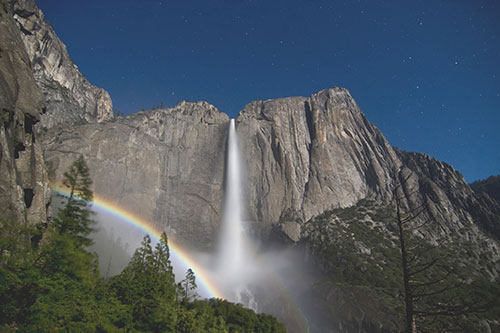
In Mariposa County, a shot in the dark takes on new meaning. With so many unique rock formations, wild rivers and pristine meadows, the opportunity for world-class night photography abounds. Whether it’s going after the elusive moonbow at the base of Yosemite Falls or setting up your tripod to capture the Milky Way rising above Tuolumne Meadows, all you need is your seasonal jacket and some time for full exposure. There are a number of websites sharing tips for nighttime photography for beginners & pros alike, and with so many excellent camera phones these days everyone has a shot at capturing something truly special.
Final Score
Easily reached from the Bay Area, Fresno and Los Angeles alike, Mariposa County is the perfect getaway. A place to distance yourself from the crowds, from the noise, and from the city lights. Whether you’re hiking solo on a backcountry trail, or parked with the family on a turnout along one of Mariposa County’s many country roads, whether you’re using the naked eye, a pair of trusty binoculars, or that brand new telescope, the night sky seems to go on forever prompting visitors to scan the heavens, take a deep breath of fresh air and announce…wow, I’ve never seen so many stars.

